Traditional Furniture Popular with Young People; Tokyo Antique Store Attracts Youth with Traditional Furniture, Chabudai Table
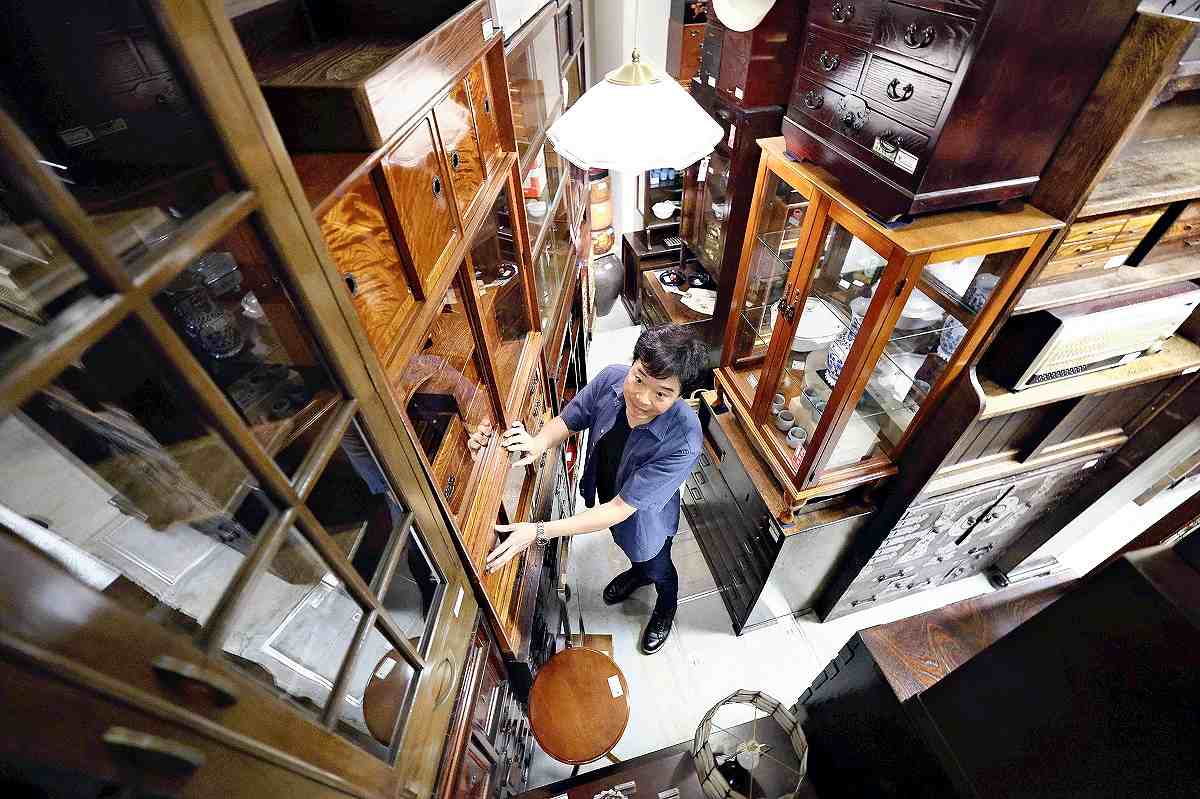
Old Japanese furniture is crammed into Antique Yamamoto Shoten in Setagaya Ward, Tokyo, on Aug. 6.
14:28 JST, October 1, 2024
Under the eaves of a store in a quiet residential area in the Kitazawa district of Setagaya Ward, Tokyo, sit an assortment of old, tasteful red chairs, shelves and other furniture items.
The store, which can be accessed from Higashi-Kitazawa Station on the Odakyu Line, is called Antique Yamamoto Shoten. It was established in 1945 and mainly sells Japanese-style furniture items made from the Meiji era to the early years of the Showa era. The store is especially popular with young people.
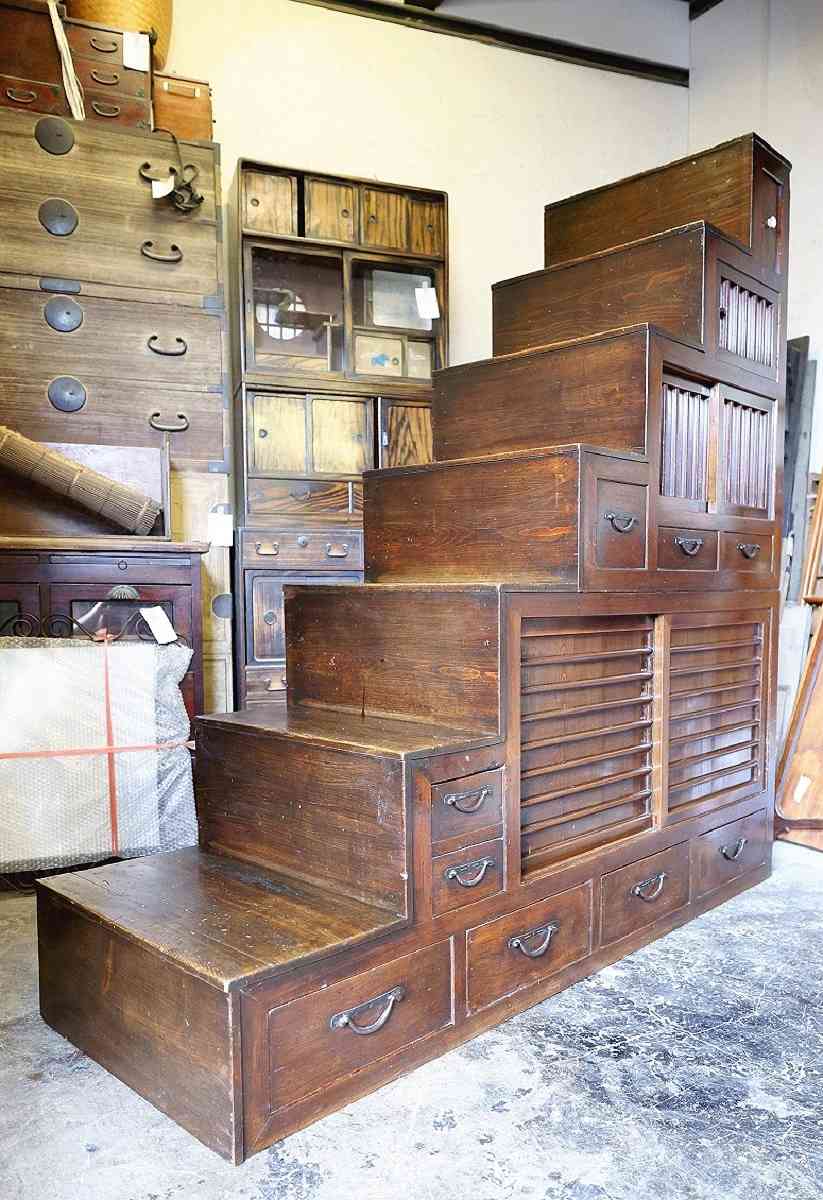
A staircase chest made in Kyoto in the early years of the Meiji era, which owner Akihiro Yamamoto describes as a great find
Akihiro Yamamoto, 55, the third-generation owner of the store, said: “About 60%-70% of our customers are young and, very often, women. They feel something new from old Japanese furniture.”
Chabudai low dining tables, which are used on tatami mats, are particularly popular. The customers have a preference for tables that suit the low-level perspective gained from sitting on the floor. Yamamoto said chabudai tables sell out the moment they are put up for sale.
Items from regions with cold climates, such as Tohoku, have massive clasps and sophisticated designs, and the chests made for merchant families are full of drawers where notebooks were stored.
A special feature of old Japanese furniture is that it has unique characteristics depending on the region and setting in which it was originally used.
That said, people these days have unique uses for them: Bookcases end up as kitchen cabinets, and fumizukue low writing desks get turned into TV tables.
The store also sells antique furniture from overseas that pairs well with Japanese furniture.
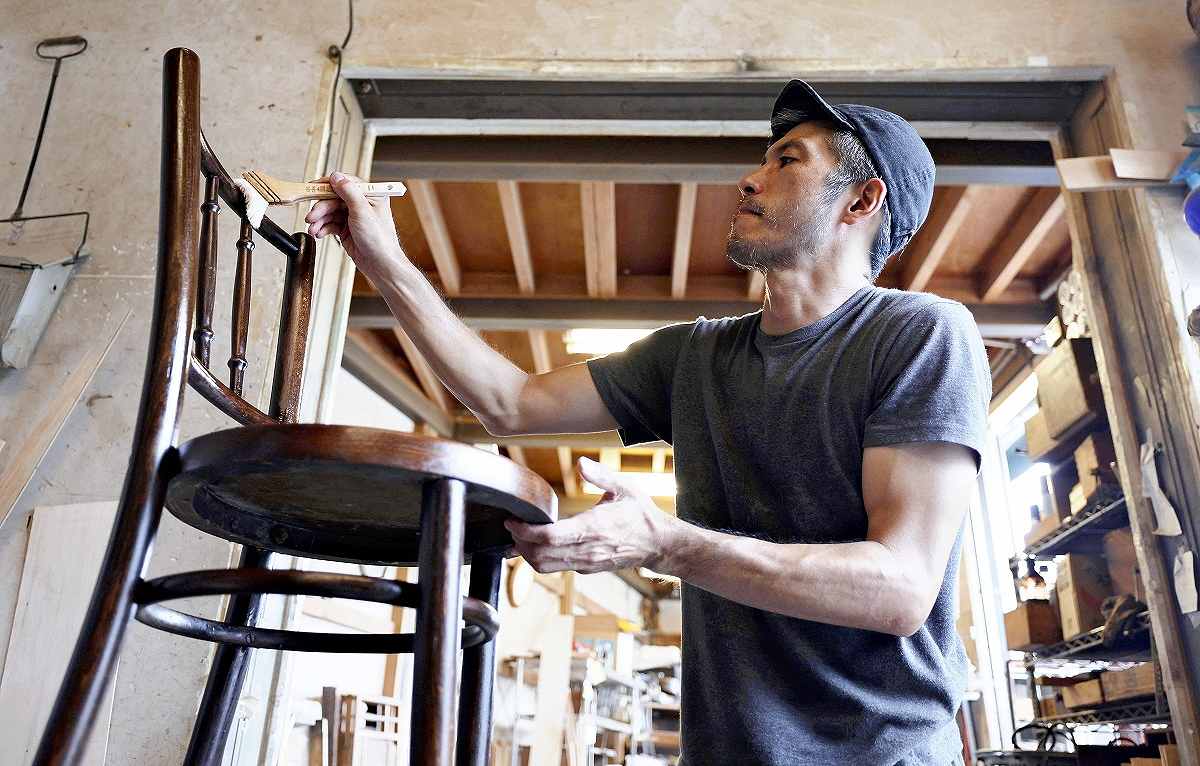
A craftsman repairs Japanese furniture bought by the store.
All the furniture gets repaired by the store’s craftspeople, who pay special attention to the moving parts such as doors and drawers, restoring them so that they can be opened and shut with a single finger.
To bring out the color tones of the original material used in each item, the craftspeople use a brush to apply a finishing coat to the surface.
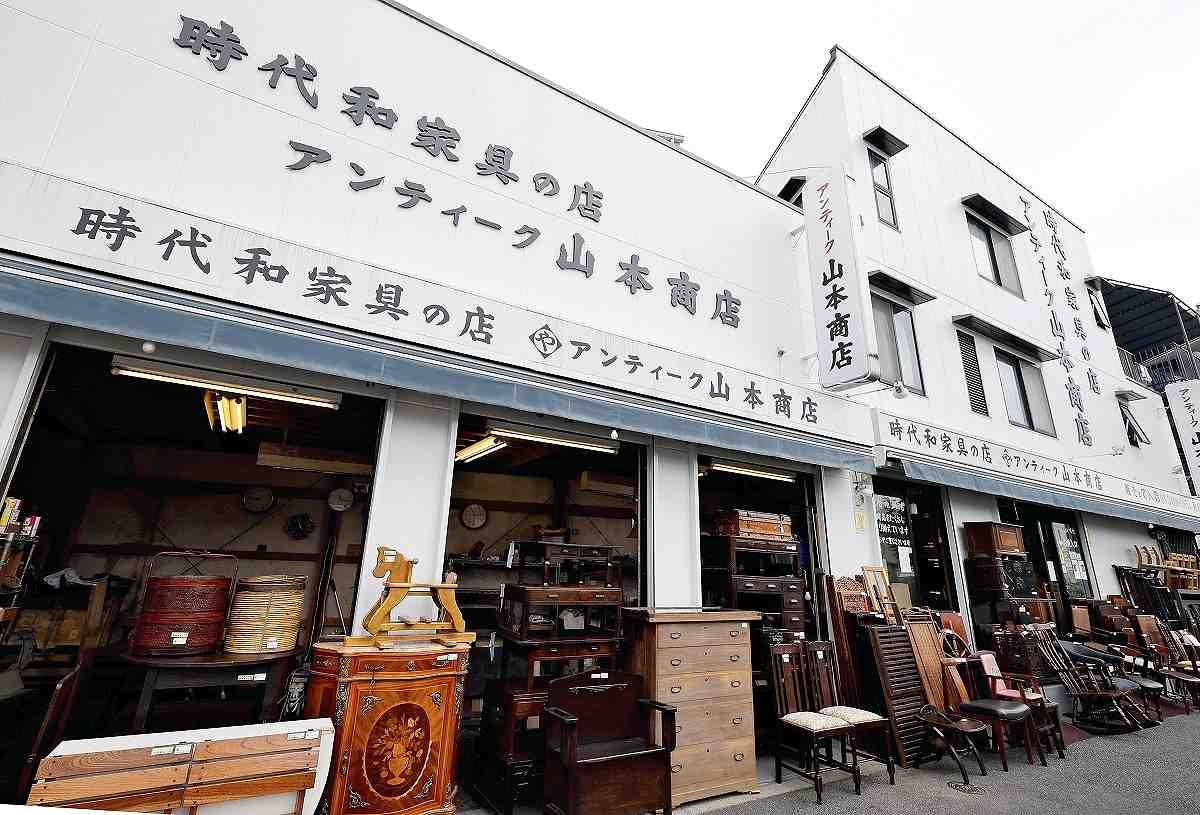
Furniture is displayed under the eaves of the store after having just been repaired.
When the repairs are finished, the items are lined up under the store’s eaves. A little while after that, they are taken inside.
For that reason, returning customers pay attention first to the items displayed under the eaves, Yamamoto said.
When the store was refurbished in 2001, Yamamoto was insistent on adding a spiral staircase to connect the second floor to the basement.
From the spiral staircase, customers can look out over the about 2,500 items crammed into the approximately 230 square meters of space. There are chests, cabinets, clocks, lighting devices and many other items.
Since the items on display have all been touched by the store’s craftspeople, they are all one of a kind.
That’s why the scenery inside the store changes drastically every two to three weeks. “I want customers to look for and find their favorite Japanese furniture items like they’re hunting for treasure,” Yamamoto said.
***
Antique Yamamoto Shoten
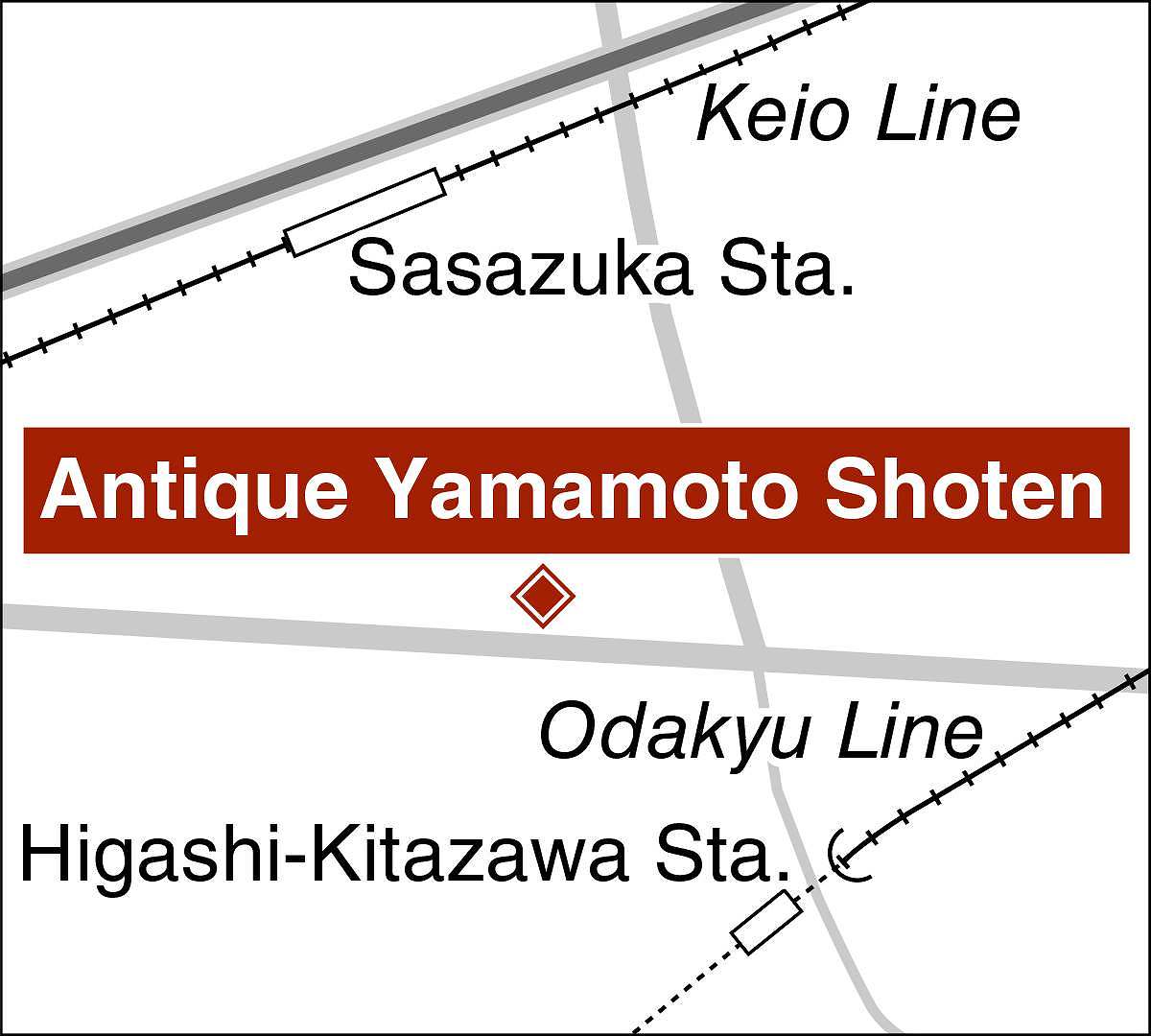
Address: 5-6-3 Kitazawa, Setagaya Ward, Tokyo
Access: A 6-minute walk from Higashi-Kitazawa Station on the Odakyu Line or a 9-minute walk from Sasazuka Station on the Keio Line
Hours: 11 a.m. to 7 p.m. Closed on Mondays. If Monday is a national holiday, the store opens that day and closes the following Tuesday instead.
Related Tags
"Features" POPULAR ARTICLE
-

Sanrio to Open Museum in Yamanashi Pref. Dedicated to Founder, Exhibits Include Hello Kitty, Other Characters
-

Autumn Foliage Surrounds Visitors to Tokyo’s Showa Kinen Park
-

My Daughter No Longer Speaks to Me, But I Want to See Her and My Grandchild
-

Kumamoto: Public Bath Refurbished as Library Where You Can Chat, Take Photos
-

Frozen Vegetables: Demand Rises for Convenient, Tasty Domestic Produce
JN ACCESS RANKING
-

Tokyo Economic Security Forum to Hold Inaugural Meeting Amid Tense Global Environment
-

Keidanren Chairman Yoshinobu Tsutsui Visits Kashiwazaki-Kariwa Nuclear Power Plant; Inspects New Emergency Safety System
-

Imports of Rare Earths from China Facing Delays, May Be Caused by Deterioration of Japan-China Relations
-

University of Tokyo Professor Discusses Japanese Economic Security in Interview Ahead of Forum
-

Japan Pulls out of Vietnam Nuclear Project, Complicating Hanoi’s Power Plans

























